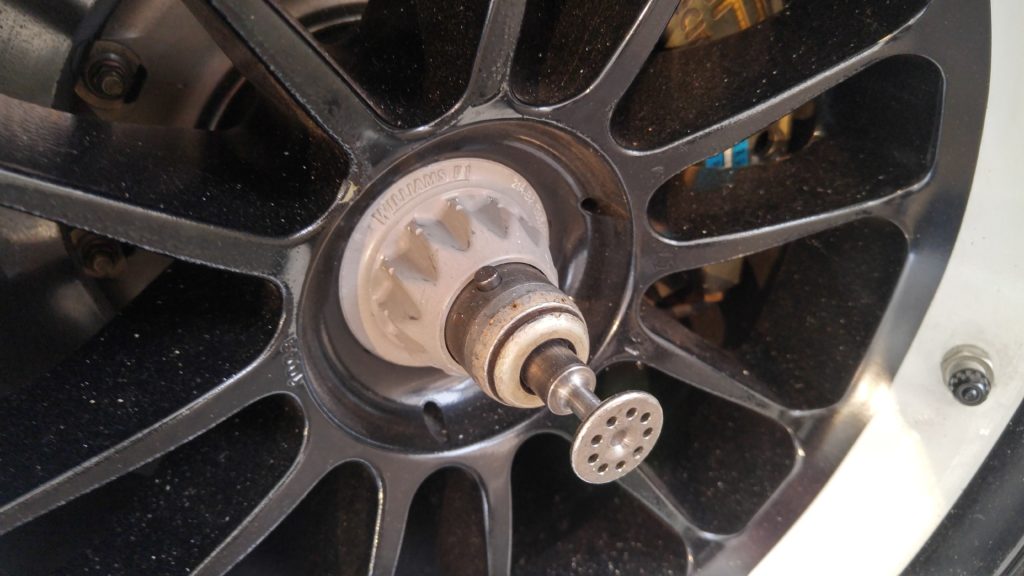Argh—I’ve got to fire my local auto-repair shop. I had high hopes for them after some reconnoitering visits showed a helpful customer-oriented culture and the presence of good tire-changing and balancing equipment. But my desire for a close-by shop to assist with my tire fetish may have blinded me a bit.
Yes, I saw the immobile armada of inoperative vehicles parked behind the main shop, but I chalked that up to good sense: With land cheap and the nearest wrecking yard an hour away, keeping a couple of worn-out Chevy three-quarter-ton pickups close at hand seemed wise. You never know when someone’s really gonna need a steering knuckle or some other hard part that could easily be scrounged from the stockpile.
However, with the clarity born of personal experience, that field of inert vehicles now seems more like a stack of abandoned machines, given up in the face of expensive or risky repairs needed—or worse, the debris resulting from some attempted repair.
I’d better get my disclaimers arranged before I go further. I’m not an ASE-certified wrench, nor do I hold an Airframe & Powerplant license. My high school didn’t have an auto shop, it offered instead something more suited to its community: Agricultural Mechanics. Learning how to fix a main PTO bearing on a combine or weld hard-surfacing onto the blade of a sweep took precedence over fitting new brake pads on an M3. On the other hand, I have worked on Navy jets, helped assemble big turbofan engines for civilian aircraft, and spent many hours in the company of professional mechanics. I know what precision and attention to detail look like.
I’d selected two test jobs for my initial work at this shop. The jobs were simple enough: Turn a pair of brake rotors and swap some tires from one set of rims to another. I hear you asking, “Remachine brake rotors? Who even does that anymore, with new parts so cheap?” But these were beefy Brembos from the front of the JCW Mini—easy enough to find, but new ones are listed at $236 each. That same beef made them good candidates for re-machining.
The shop acknowledged those facts, and although their own turning machine had been retired, they subcontracted the work to a vendor farther down the subcontractor line. The brake rotors came back in fine shape for a reasonable price: One point to the local shop—and on to the tire swap.
There were two pairs of studded Hakkapeliittas, one pair slightly wider than the other. The destination rims were likewise in two pairs, one slightly wider than the other. When I arrived to pick up the wheel sets, I saw that they’d mis-matched the staggered tires on the staggered wheels, putting the wider tire on the narrower rim and vice-versa—but only for two of the wheels. The other two were correct. With an apology, they quickly remedied the tire-to-wheel association and I watched as they balanced the correctly mounted tires to 000. I also grimaced while they dropped one of the balanced wheels onto its finish side; “Maybe they’re more used to steel wheels,” I thought. I loaded up and decamped for home.
At my garage, a few more nits came to light. They’d misplaced the square silver valve-stem caps that come on the TPMS units, instead installing a mix of used caps in various colors. Then the strange stuff started: Yes, they’d used a high-end automatic balancer to get good balance on the freshly-mounted tires, but they installed the stick-on weights in locations that interfered with both the front and rear calipers—this, despite having removed the previous stuck-on weights that were installed in the correct location. Even with the remaining gum from the mounting tape visible as a guide, they’d attached the new weights closer to the wheel centerline, and the new weights hung up on the brakes when I test-rotated them.
I shifted the new weights laterally to the correct location. No harm, really; it was a move of perhaps an inch more outboard.
Then I got to the last wheel. It was carrying three full ounces of new lead, which seemed like a lot compared to the weight installed on the wheels I’d already adjusted. Widening my gaze, I saw the cause: 180 degrees from the new lead weights sat the previous iron weights, those that were installed when the old tires were balanced previously. The local shop had neglected to remove that iron set, and the “balance correcting” weights they installed were essentially nullifying the weights already on the wheel.
A “balanced” wheel/tire setup, with almost perfectly opposing sets of weights.
I laughed… because that response keeps my blood pressure down.
It was about this time that I saw the derelict cars parked around the shop in a new light. They had me reflect on what I saw while waiting for the tires to be re-mounted, a certain surreptitious connection between the two apprentices doing the work. I fear that those novices are from a tribe where showing ignorance is a weakness, and pointing out another’s ignorance is an insult. With those taboos in place, knowledge can come only through communication from an authority or through individual exploration when you’re alone. Whatever the cause, the tire-changers missed several clues to the right way to deal with these wheels and tires, and I wound up doing the rework at home.
Maybe I’m just spoiled. Really good mechanics make complex or tricky repairs seem easy, and I’ve been fortunate to know folks like Portland’s Garth Ankeny. In the tire/wheel/suspension world, he hath no equal. Vast experience lets him multitask most jobs, and watching him bring the focus of an eagle upon some unexpected condition or not-quite-right sound is impressive. The objects that leave his shop can’t be improved upon—not by me, at any rate. I might as well try to refine that Formula 1 wheel-retention system.
And a man’s got to know his limitations.—Marinus Damm
[Photos courtesy Marinus Damm.]
